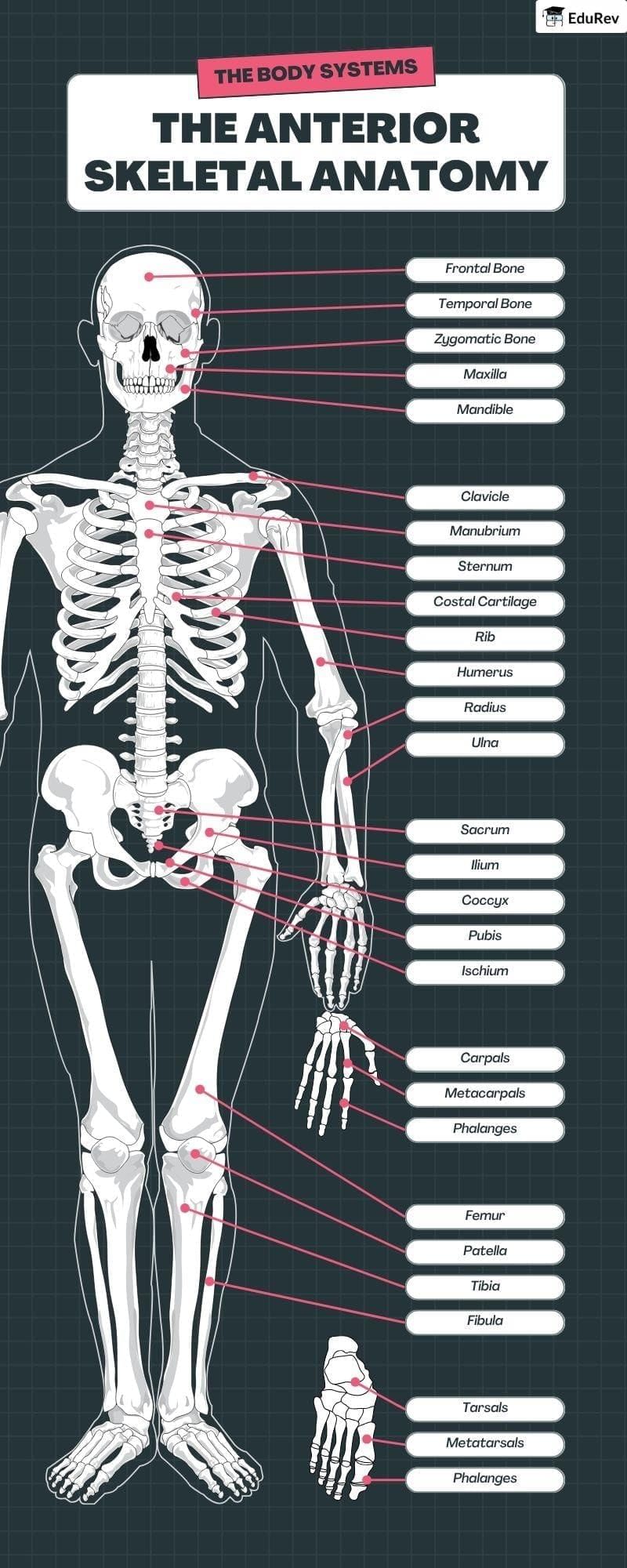NEET Exam > NEET Notes > Biology Class 11 > Infographics: Skeletal System
Infographics: Skeletal System | Biology Class 11 - NEET PDF Download

The document Infographics: Skeletal System | Biology Class 11 - NEET is a part of the NEET Course Biology Class 11.
All you need of NEET at this link: NEET
|
150 videos|399 docs|136 tests
|
FAQs on Infographics: Skeletal System - Biology Class 11 - NEET
| 1. What are the main functions of the skeletal system? |  |
Ans. The skeletal system has several vital functions, including providing structure and support to the body, protecting vital organs (such as the brain, heart, and lungs), facilitating movement through joints and leverage for muscles, storing minerals (such as calcium and phosphorus), and producing blood cells in the bone marrow, which is essential for maintaining healthy blood function.
| 2. How many bones are there in the adult human skeleton? |  |
Ans. An adult human skeleton typically consists of 206 bones. However, this number can vary slightly due to individual differences, such as the presence of extra bones called accessory bones or variations in the structure of certain bones, especially in the hands and feet.
| 3. What are the different types of bones in the human body? |  |
Ans. The human skeleton is composed of several types of bones categorized based on their shapes and functions. The main types are long bones (e.g., femur), short bones (e.g., carpals), flat bones (e.g., skull), irregular bones (e.g., vertebrae), and sesamoid bones (e.g., patella). Each type plays a specific role in the body's overall structure and function.
| 4. What is the role of cartilage in the skeletal system? |  |
Ans. Cartilage serves multiple roles in the skeletal system, acting as a flexible connective tissue that cushions joints, providing support and shape to various structures (like the ears and nose), and facilitating smooth movements at joints by reducing friction between bones. Cartilage also plays a crucial role during the growth of long bones in children and adolescents.
| 5. How do bones grow and develop throughout a person's life? |  |
Ans. Bone growth and development occur through a process called ossification, where cartilage is gradually replaced by bone tissue. In childhood and adolescence, bones grow in length at the growth plates (epiphyseal plates) and in width through appositional growth. After reaching adulthood, bone remodeling continues, which involves a balance between bone resorption and bone formation, maintaining bone health and strength throughout life.
Related Searches
















